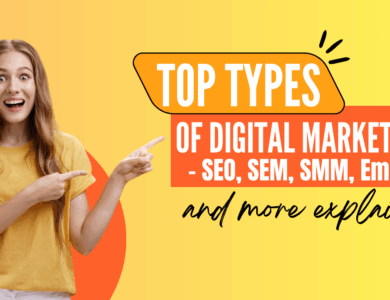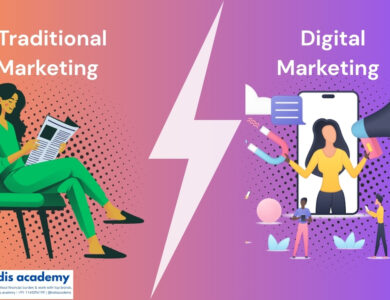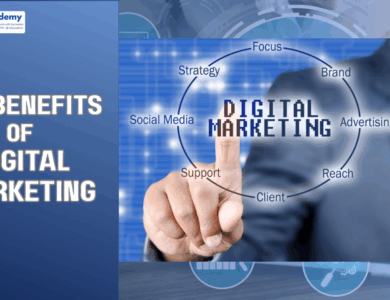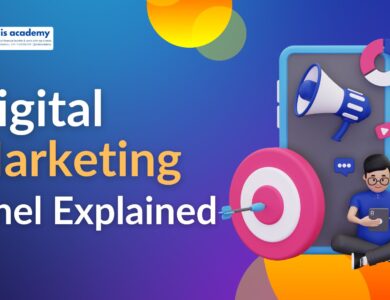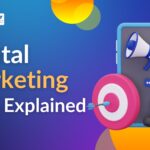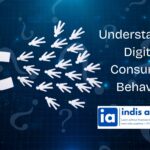B2B vs B2C Digital Marketing – Key Strategy Differences Explained
Explore the core differences between B2B and B2C digital marketing strategies. Learn which approach suits your business, how buyer behavior differs, and what tactics drive success in each model.
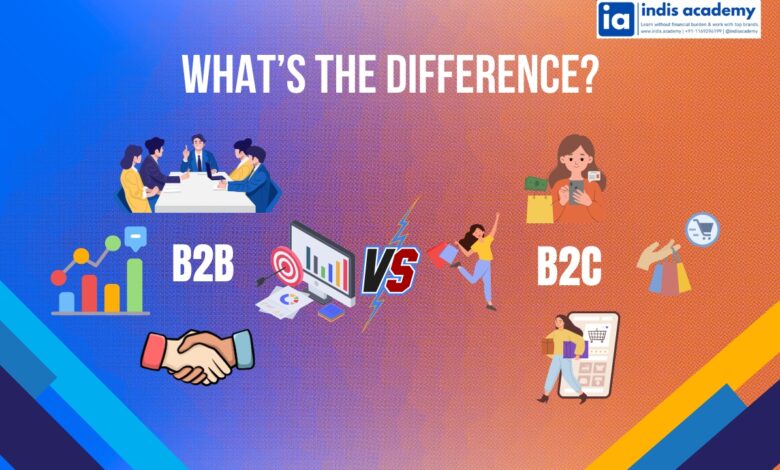
Digital marketing isn’t a one-size-fits-all approach. What works for a clothing brand selling to teenagers may not work for a software company targeting corporate decision-makers. This is where understanding the difference between B2B (Business-to-Business) and B2C (Business-to-Consumer) digital marketing becomes essential.
If you’re new to digital marketing or trying to figure out the best approach for your product or service, this guide will help. It covers the core strategy differences between B2B and B2C, their audience behaviors, content styles, channel preferences, and lead generation techniques.
What is B2B Digital Marketing?
B2B digital marketing focuses on selling products or services to other businesses. The audience includes professionals, procurement officers, or decision-makers who evaluate offerings based on how they can help their business grow or solve a specific challenge.
Examples:
- A software company selling project management tools to enterprises.
- A consulting agency providing strategy services to startups.
- A cloud storage solution targeting IT departments.
Key characteristics:
- Focus on building long-term relationships.
- Requires detailed information and education about the product or service.
- Often involves multiple decision-makers.
- Sales cycle is longer and more complex.
The primary goal is to generate high-quality leads and nurture them through trust-building strategies like case studies, webinars, and in-depth content.
Read more articles on Digital Marketing:
- Inbound vs Outbound Marketing: Content vs. Ads – Key Differences Explained
- History of Digital Marketing – How It All Began and Where It’s Headed
What is B2C Digital Marketing?
B2C digital marketing is about selling directly to individual consumers for personal use. It focuses on delivering fast, engaging, and emotionally appealing content to drive immediate purchases.
Examples:
- An ecommerce brand selling fashion or electronics.
- A food delivery app promoting discounts and offers.
- A fitness brand promoting its apparel through influencers.
Key characteristics:
- Emotional and benefit-driven messaging.
- Shorter buyer journey; decisions are often impulsive.
- Content needs to be engaging and visually appealing.
- Sales are usually one-off or based on repeat purchases.
The goal here is to capture attention quickly, create a need, and encourage fast action—usually within minutes or hours of discovering the brand.
Key Differences Between B2B and B2C Digital Marketing
1. Audience Behavior and Decision-Making
- B2B buyers are driven by business value. They make decisions after evaluating the product’s return on investment, efficiency, and long-term benefits. Emotional appeal is less important; credibility and expertise matter more.
- B2C buyers are influenced by emotions, trends, and convenience. A well-placed product image or an exciting offer can drive a purchase without deep analysis.
Summary: B2B relies on logic and planning, while B2C is often about impulse and desire.
2. Sales Cycle Duration
- B2B sales cycles are typically longer. Buyers go through multiple stages—research, internal discussion, budget approval—before making a decision.
- B2C sales cycles are short. Consumers often make a purchase decision in minutes or hours, especially when products are under a certain price range.
Summary: B2B focuses on long-term persuasion, while B2C aims for quick conversions.
3. Content Style and Tone
- B2B content is more educational, formal, and data-driven. It often includes whitepapers, product demos, industry reports, and long-form articles to help the buyer make informed decisions.
- B2C content is informal, catchy, and visually appealing. It uses videos, memes, product photos, short blog posts, and testimonials to grab attention.
Summary: B2B content informs and B2C content excites.
4. Marketing Channels
- B2B marketing primarily uses LinkedIn, email campaigns, SEO-driven blogs, and webinars to reach professional audiences.
- B2C marketing relies on platforms like Instagram, Facebook, YouTube, and Google Ads to engage consumers with visual content, influencers, and product promotions.
Summary: Choose channels based on where your target audience spends their time.
5. Advertising Strategy
- B2B ads focus on value propositions, lead magnets (like free guides), and nurturing strategies. Platforms like LinkedIn and Google Search are popular.
- B2C ads aim to spark immediate interest through visuals, emotion, discounts, and urgency. Social media ads are widely used.
Summary: B2B ads build trust over time; B2C ads trigger quick action.
SEO and Content Strategy: B2B vs B2C
While SEO is critical in both B2B and B2C, the search intent behind keywords varies significantly.
B2B SEO
- Focuses on informational or navigational intent.
- Example keywords: “best CRM for small business”, “how to automate lead generation”.
- Prioritizes long-form content like how-to guides, industry analysis, and case studies.
B2C SEO
- Focuses on transactional or commercial intent.
- Example keywords: “best smartphones under ₹20,000”, “top skincare brands 2025”.
- Prioritizes product-focused pages, reviews, and comparison posts.
Summary: B2B SEO attracts leads through education. B2C SEO attracts traffic through product discovery.
Lead Generation Approaches
B2B
- Gated content like eBooks, reports, or free trials.
- Signup forms, demo requests, and newsletters.
- Focus on nurturing through drip email campaigns.
B2C
- Offers, coupons, and flash sales.
- Direct call-to-action buttons (like “Buy Now”, “Add to Cart”).
- Retargeting for abandoned carts and cross-selling.
Summary: B2B captures leads and nurtures slowly. B2C prompts direct action.
Examples of Successful Campaigns
HubSpot (B2B)
HubSpot grew through educational content. They offer free templates, in-depth blogs, and automation tools that attract marketers and sales professionals. Their lead nurturing strategy through email and CRM is a benchmark in B2B.
Zomato (B2C)
Zomato uses witty notifications, viral social media content, and local campaigns to stay top of mind. Their approach focuses on entertainment and brand recall, leading to repeated app usage and customer loyalty.
Which Strategy is Right for You?
Ask yourself:
- Who is your target customer: a business or a consumer?
- How complex is your product or service?
- Does your customer need education or emotional connection?
- Are you focusing on long-term deals or immediate sales?
Here’s a quick comparison chart:
| Criteria | B2B | B2C |
|---|---|---|
| Buyer Type | Business/Professional | Individual Consumer |
| Buying Decision | Logical, ROI-driven | Emotional, Value-driven |
| Sales Cycle | Weeks to Months | Minutes to Days |
| Channels | LinkedIn, Email, SEO | Instagram, Facebook, YouTube |
| Content Style | Educational, Technical | Visual, Entertaining |
| Lead Generation | Demos, Reports, Webinars | Discounts, Offers, Reviews |
Conclusion
B2B and B2C digital marketing may use similar tools—ads, SEO, email—but how and why they use them is different. Success lies in understanding your audience and crafting your strategy to match their mindset.
- B2B is about building relationships, trust, and offering long-term value.
- B2C is about triggering immediate interest, solving daily needs, and delivering great user experiences.
Before launching your next campaign, pause and ask: “Am I marketing to a business or a human?” The answer could change your entire strategy—and your results.
